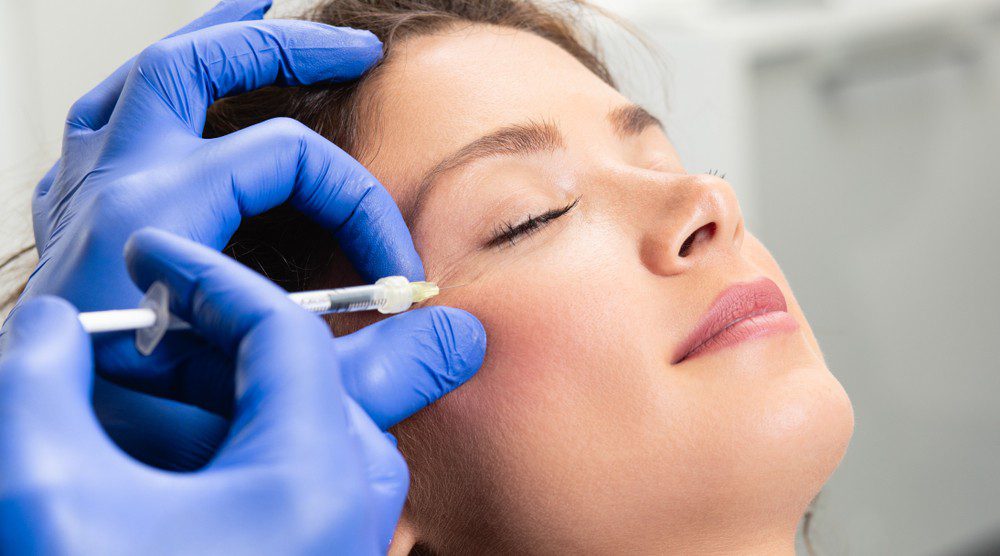Chemical Peel - Treatment, Procedure, Benefits, Types

Chemical peels involve the application of a specific solution to the skin, leading to exfoliation of its upper layers. As the skin regenerates, it appears more refined. These treatments can help diminish wrinkles, acne marks, discoloration, and other blemishes. The intensity of the peel and its results depend on the chemicals used. While lighter chemical; peels may necessitate multiple sessions, deeper chemial peel provide pronounced outcomes but require a longer healing period.
Understanding Chemical Peels
At their core, chemical peels are aesthetic procedures that use acids to shed the skin. These acids ensure an even removal of compromised skin cells over the treated surface. When executed correctly, these treatments facilitate skin recovery with minimal discoloration or scarring.
Chemical peels can target the epidermis (outer skin layer) and, to some extent, the dermis below it. The dermis houses sweat glands, nerve endings, and hair follicles. Most chemical peels focus on the epidermis, but more potent ones can penetrate the upper dermis. Some common acids in chemical peels include:
- Alpha-hydroxy acids like glycolic, lactic, and citric acid.
- Beta-hydroxy acids, with salicylic acid being a notable example.
- Trichloroacetic acid, used mainly in medium-strength peels.
- Phenol, reserved for the most intense peels.
Differentiating Between Chemical Peel Varieties
- Light chemical peels focus on the epidermis, targeting minor blemishes and dryness. They can be done every 2-5 weeks.
- Medium chemical peels penetrate both the epidermis and some part of the dermis. Ideal for more pronounced imperfections, they may require multiple sessions.
- Deep chemical peels delve further into the skin, addressing serious issues like deep-set wrinkles or precancerous growths. One session is usually sufficient.
Advantages of Opting for a Chemical Peel
These skin-resurfacing treatments offer solutions for issues like acne, enlarged pores, scars, and pigmentation while enhancing skin's texture and tone.
Preparing and Undergoing a Chemical Peel
Pre-Peel Preparation
Preparatory steps include:
- Avoid sun exposure and tanning two weeks before.
- Use prescribed skin products.
- Refrain from retinoid use a week or two prior.
- Take prescribed oral medications 24 hours beforehand.
- Ensuring the skin is free from infections and open wounds. Remember to follow any additional guidance from your healthcare provider.
Detailed Chemical Peel Process
- A healthcare professional applies the chosen chemical solution with tools like brushes or cotton balls, leading the skin to turn white.
- A warm sensation, possibly accompanied by stinging, will be felt briefly.
- The chemical is neutralized or washed off.
Guidelines for Post-Peel Recovery
- Expect a reaction similar to sunburn with subsequent skin peeling over 3-7 days.
- Keep the skin moisturized and shield it from the sun for two weeks post-procedure.
- Makeup can be worn after a week.
Positive Outcomes of Chemical Peels
Enhanced Skin Smoothness and Evenness
Minimized Wrinkles and Lines
Reduction of Sun-Induced Damage
Addressing Rough Patches and Lackluster Appearance
Boosting General Skin Health
Potential Side Effects of Chemical Peels
While most side effects are mild, some may persist:
- Prolonged redness, swelling, or scabbing.
- Skin discoloration.
- Rare scarring occurrences.
- Possible infections, including herpes flare-ups.
It's crucial to consult with an expert and relay any past skin issues or treatments.
Common Questions Regarding Chemical Peels
How many chemical peel sessions do I need?
While results from light and medium peels differ, you can opt for medium peels every 6-12 months and light ones every 2-5 weeks.
How does chemical peel work?
Chemical peel treatments employ chemicals to induce controlled skin shedding, revealing fresher layers beneath.
How many chemical peel sessions do I need?
While deeper peels are often one-off procedures, lighter ones might necessitate repeated sessions
Most Popular:
-

Sciton HALO vs Sciton BBL
Read More »September 20, 2022 -

What is profhilo, and how is it different from fillers?
Read More »September 20, 2022 -

Body contour solutions from SKIN111
Read More »September 20, 2022 -

Does IV GLUTATHIONE therapy work
Read More »September 20, 2022 -

How can an IV drip help you boost your energy
Read More »September 20, 2022